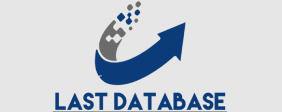One of the primary drawbacks of a static curriculum is its potential to hinder critical thinking and problem-solving skills. These skills are indispensable in a world where the ability to analyze, synthesize, and adapt to new challenges is essential. An adaptable curriculum encourages students to explore diverse perspectives, question assumptions, and tackle complex problems from multiple angles. In contrast, a fixed curriculum tends to prioritize rote memorization and standardized testing, limiting opportunities for students to develop the creative thinking skills needed to address the uncertainties of the future.
Cultural Relevance and Diversity
Another concern with a static curriculum is its Chile WhatsApp Number List possible lack of cultural relevance and diversity. Societies are becoming increasingly diverse, and education should reflect this reality. A curriculum that fails to incorporate various cultural, historical, and social perspectives risks perpetuating biases and inequalities. An inclusive curriculum not only helps students appreciate different worldviews but also equips them with the skills needed to collaborate and communicate effectively in a globalized world.
Lifelong Learning and Adaptability

The dynamic nature of modern careers requires individuals to be adaptable and engaged in lifelong learning. A static curriculum, however, may promote a mindset of education as a fixed endeavor with a predefined endpoint. This can lead to a gap between academic knowledge and practical skills needed in the workforce. A curriculum that emphasizes continuous learning, interdisciplinary studies, and the application of knowledge in real-world contexts better prepares students for the challenges of the professional world.
Technology’s Influence
Technology has revolutionized various aspects of our lives, including education. The digital age has ushered in new modes of learning, collaboration, and communication. Yet, a static curriculum may struggle to integrate these advancements BRLists effectively. Online resources, interactive platforms, and simulations can enhance learning experiences. They require educators to be open to adapting their teaching methods and content.






